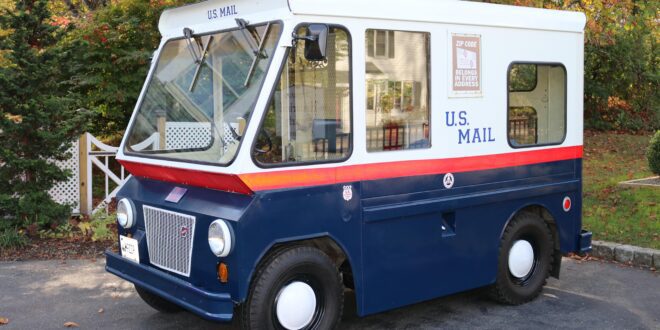SEYMOUR, CT – The vintage license plates on the rare 1963 Studebaker mail truck owned by retired postal worker Frank Haines of Seymour read “MRZIP.” They refer to the cartoon character “Mr. Zip” that the U.S. Postal Service used to hype the 1963 introduction of the still-in-use zip code system for mailing letters as well as the nickname that Haines has acquired since buying the promotionally named Zip-Van.
“I worked 42 years for the post office. I started in 1962. In 1963, we got a Zip-Van into the office and I drove it and I fell in love with it. I drove trucks for 42 years in the post office and it was my favorite truck,” Haines said recently. “They named it Zip-Van because in May of 1963 that’s when they started zip codes.”
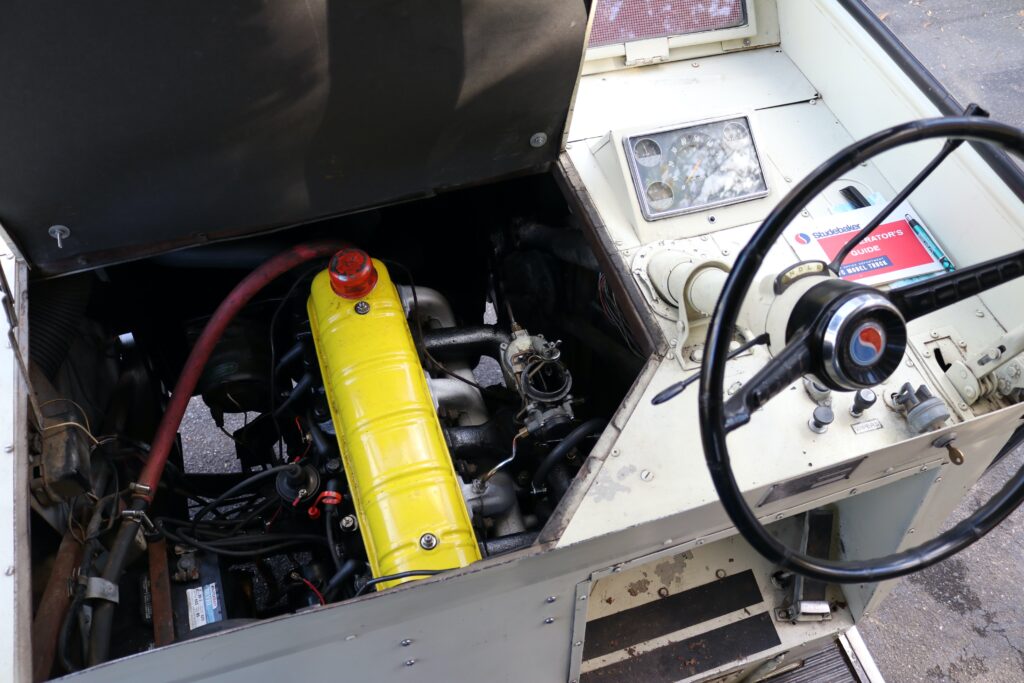
Powered by Studebaker’s 170-cubic-inch, six-cylinder “Skybolt” motor, the Zip-Van features a cab-over design with the engine accessed via a flip panel in the dash located to the left of steering wheel. Yes, to the left of the steering wheel. The Zip-Van is a right-hand drive model that allowed carriers easy access to roadside mailboxes.
The Zip-Van provides two driving options. “There are two gas pedals. One for driving when you’re standing and one for driving when you’re sitting,” Haines explained. Entrance to the Zip-Van is through a sliding door on the right side. There is no door on the left side.

Haines, who is 81, has owned his 60-year-old Zip-Van since 2008. He bought it at a tractor and farm machinery auction in Oregon after a four-year quest that began when he retired. He learned of the auction from an ad in “Farm Collector” magazine that he spotted when visiting the defunct Golden Age of Trucking Museum in Middlebury. Joined by son-in-law Chris Orcutt, he flew west and rented a truck and trailer to attend the auction.
“It started at 8 o’clock in the morning. We got there about 7:30, pulled in with our truck and trailer, and there was 450 people there. All farmers. They started bidding on tractors and farm machinery. The last thing they auctioned off at the end of the day, about 4:30 in the afternoon, was the mail truck,” he said.
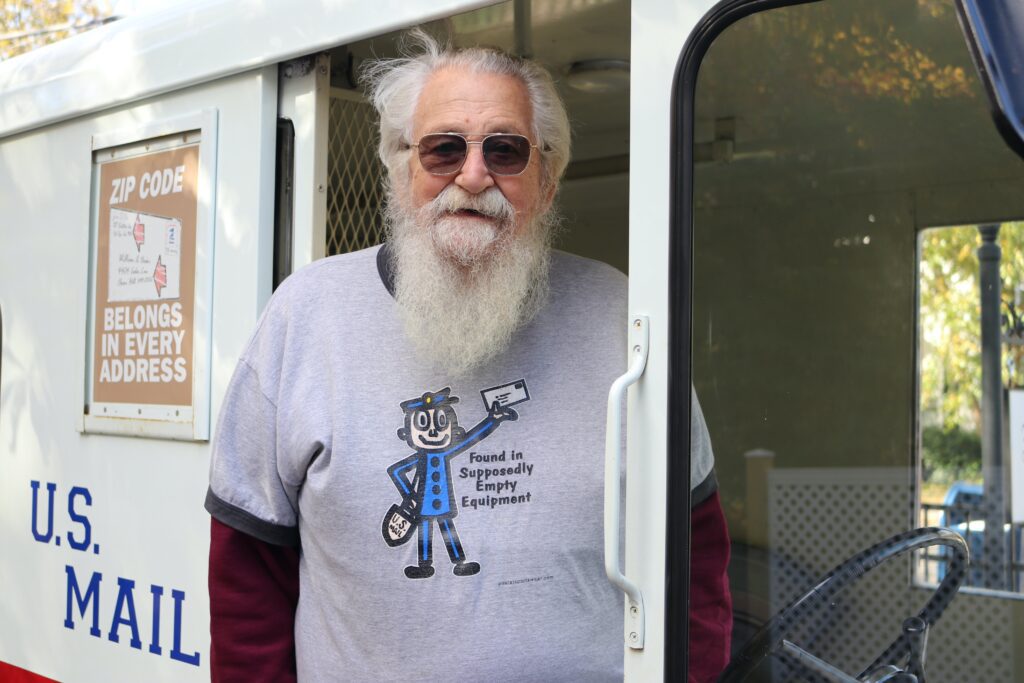
Only one other person bid on the truck, a mother who thought it would be perfect for her son to haul around his band equipment, but Haines wasn’t to be denied. “I got it for $2,900, which I thought was a huge bargain. It was in the wrong auction. If it was in an automobile auction it would have brought much, much more because of its rarity,” he said.
Studebaker only produced 4,238 examples of the Zip-Van, and lost the contract to build mail trucks the next time the post office requested bids. The U.S. government had but one criteria when purchasing goods. “They went for the lowest bid. Studebaker put the lowest bid in (in 1963),” Haines said. AMC got the contract next, barely beating out Studebaker. “I can’t prove it but somebody looked it up and I believe they said they lost it by 19 cents per unit.”
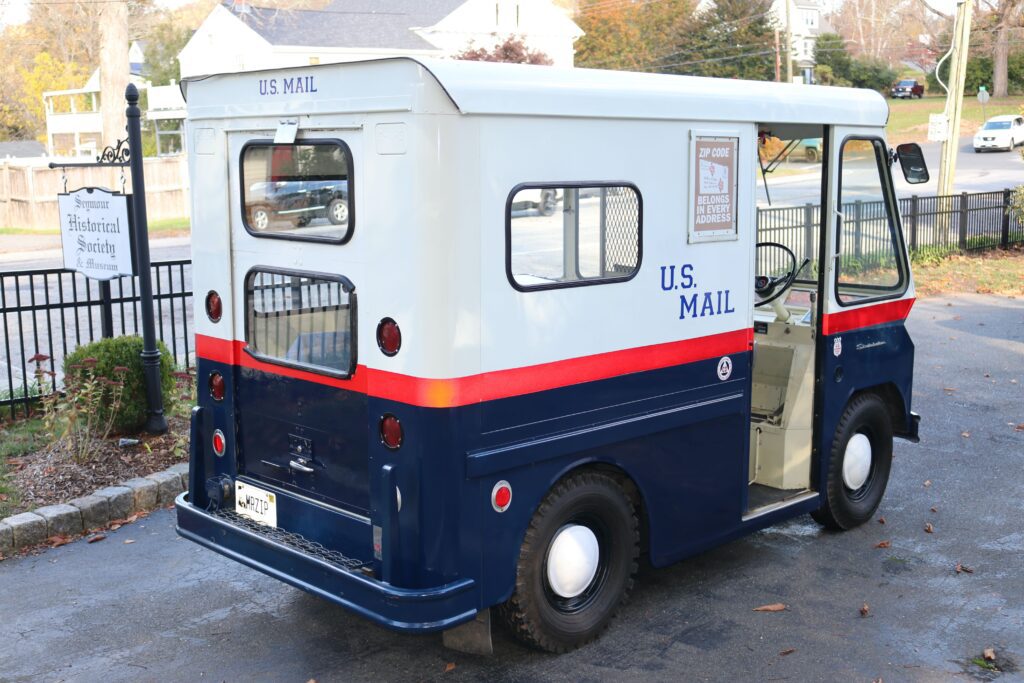
The Zip-Van wasn’t in bad shape when Haines acquired it. After having been discarded by the postal service, it had a second life on a farm. “The farmer’s wife used it to go to the farm market with vegetables. She only drove it once a week. It was always under a shed, they told me,” Haines said.
After getting it home, Haines and Orcutt began cleaning it up. It has received a new rear door that slides up and down just like a garage door. In June 2021, Haines showed the Zip-Van at the Woodbury Lions Club Car Show and severely overheated the engine on the drive home. The result was a three-month rebuild at a repair shop in Massachusetts that specializes in Studebakers.
A close inspection of the Zip Van reveals some interesting elements. Centered below the windshield on the exterior is what appears to be a plaque bearing the Studebaker logo and the Zip-Van name. It’s actually a hinged door behind which is the cap to the radiator.
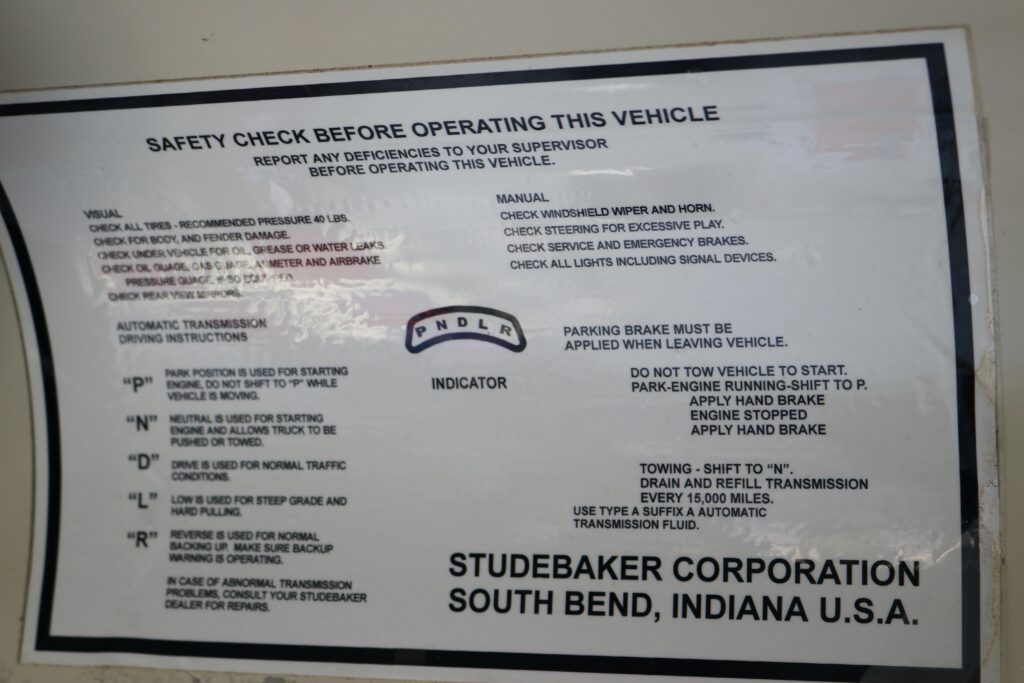
Inside the cab are warning labels that give safety and operating instructions. One notes that the vehicle was built by “Studebaker Corporation” in “South Bend, Indiana U.S.A.” That may be the case but the body was built by Met-Pro Inc. of Landsdale, Pa. The grill on the Zip-Van is fashioned in the shape of a keystone, a nod to Pennsylvania’s nickname as “The Keystone State.” In a money-saving move, it lacks a cigarette lighter and ash tray, which were common to vehicles in that era.
While the Zip-Van has a traditional accelerator pedal for use when the driver is seated, there’s an attached lever that connects to a metal bar on the floor. The bar can be moved back and forth by the inside of the operator’s foot when driving in a standing position. “They’re kind of a bear to drive. I loved driving standing up but you gotta remember at that time I was 21,” Haines said. “They didn’t turn easily. You couldn’t do a U-turn in the middle of the road. You had to back up in somebody’s driveway or something to turn around.”
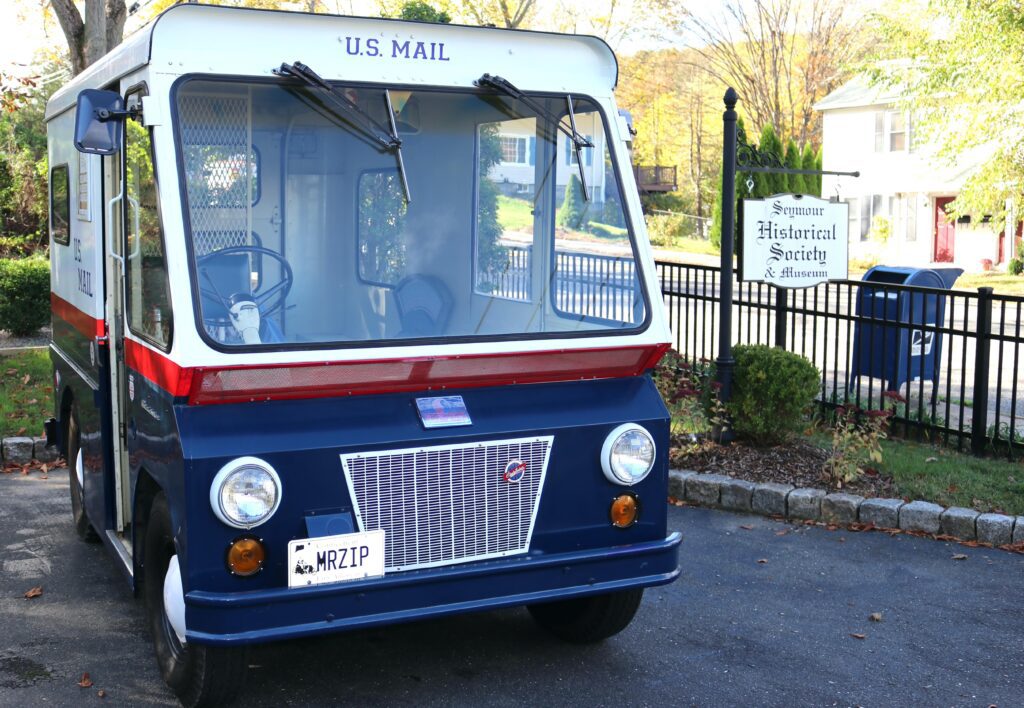
Haines has been pleased with his Zip-Van, which bears the post office’s color scheme of the time – white on top, blue below and a red stripe around the middle. Given the model’s original use and short production life, they’re not often seen.
“I drive it whenever I can. I love to drive it,” Haines said. “To my knowledge, I’m the only one that’s registered, insured and driving around.”
See the 1963 Studebaker Zip-Van in action in this RIDE-CT video…
 RIDE-CT – Classic Cars Celebrating Classic Cars in Connecticut
RIDE-CT – Classic Cars Celebrating Classic Cars in Connecticut

